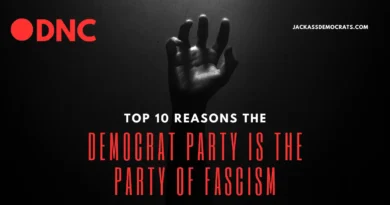How Nations Overcame Dark Chapters In Past History
Below is an in‐depth historical analysis that examines ten countries and the dark chapters in their pasts—periods that many citizens and historians agree were eras best left behind. In each case, we explore how these regimes or ideologies affected society and the long, difficult paths that eventually led to reform and renewal.
Table of Contents
Lessons from the Past: How Nations Overcame Dark Chapters in History
How Nations Overcame Dark Chapters In Past History. History, as any historian will attest, is punctuated by episodes of extreme hardship and moral crisis. From the inhumane brutality of Nazi Germany to the recent political backlash in the United States over the WOKE era which the left attacked society norms all over the world, nations have experienced periods they would rather not relive. Here we review a top ten list of countries that, through revolutions, reforms, and sheer resilience, have confronted the legacies of their oppressive pasts and worked to chart new courses.
1. Germany – The Nazi Era
Between 1933 and 1945, Germany was ruled by Adolf Hitler’s Nazi regime—a period marked by aggressive expansionism, genocide, and totalitarian control. The systematic persecution of Jews, Romani people, political dissidents, and many others remains one of the darkest periods in human history. The war left the country devastated and morally scarred. In the post-war period, Germany underwent a painstaking process of denazification. Allied occupation, followed by the establishment of a democratic government, facilitated trials for war criminals (most famously at Nuremberg), and a cultural reckoning that persists in its public memory. The German experience is a testament to the possibility of regeneration even after unspeakable evil, albeit with a profound commitment to remembrance and education to prevent recurrence.
2. The Soviet Union – Stalinism
Under Joseph Stalin’s rule in the 1930s through the early 1950s, millions in the Soviet Union suffered from state-induced terror. Forced collectivization, purges, mass executions, and the notorious Gulag system inflicted deep wounds on society. Communities were decimated by suspicion, and the regime’s policies led to famine and economic ruin in many areas. The death toll and the stifling of intellectual and cultural life left an indelible mark on generations. With Stalin’s death in 1953 and subsequent policies of de-Stalinization initiated by later leaders, the Soviet Union slowly began to address the legacy of terror. Though scars remain, the era spurred debates on human rights and governmental accountability that would eventually echo beyond the Soviet borders.
3. Cambodia – The Khmer Rouge Regime
The Cambodian genocide under the Khmer Rouge from 1975 to 1979 is one of the most tragic examples of ideological extremism. Led by Pol Pot, the regime sought to create an agrarian utopia by forcibly evacuating cities, abolishing money, and eliminating perceived enemies of the state. An estimated two million people perished due to starvation, overwork, and execution. The rural, agrarian policy upended traditional life and led to a loss of cultural and intellectual heritage. The Vietnamese invasion in 1979 ultimately toppled the regime, allowing survivors to slowly rebuild their society and pursue justice through trials of former Khmer Rouge leaders. The painful reconstruction process in Cambodia has become a cautionary tale about the perils of radical social engineering.
4. Chile – The Pinochet Dictatorship
The 1973 military coup in Chile ushered in the authoritarian regime of General Augusto Pinochet. The new government swiftly moved to dismantle socialist reforms and brutally suppressed dissent. Political opponents were detained, tortured, and, in many cases, disappeared. This period of state terrorism left deep divisions within Chilean society and a legacy of mistrust in institutions. By the late 1980s, mounting internal pressures and international condemnation forced a transition back to democracy. The subsequent truth and reconciliation efforts have been essential in addressing past human rights abuses and rebuilding national trust. Chile’s journey underscores the complex process of reconciling with a painful past while forging a path to a more inclusive future.
5. South Africa – The Apartheid Era
From 1948 until the early 1990s, apartheid in South Africa institutionalized racial segregation and discrimination, creating a deeply divided society. Non-white citizens were relegated to impoverished townships, denied basic rights, and systematically oppressed under an ideology of white supremacy. The resistance was formidable—led by figures like Nelson Mandela and countless grassroots organizations—and ultimately culminated in a negotiated transition to democracy. The dismantling of apartheid, though not without challenges, represents one of the most profound transformations in modern history. The Truth and Reconciliation Commission played a pivotal role in addressing the atrocities of the past and setting the stage for healing and unity.
6. United States – The “Woke Era”
More recent debates have seen segments of American society, as well as countries across the globe, refer to a “woke era” as a period characterized by rapid and sometimes contentious shifts in cultural norms, especially surrounding race, gender, and identity politics. Critics of this era argue that an overzealous focus on politically correct language and identity politics led to a polarized social environment, culminating in electoral backlash during the most recent national elections. While mainstream historical scholarship remains divided on how to periodize or even fully characterize this era, many point to the intense attack on Free Speech as well as the indoctrination on colleges and campus culture, along with coordinated corporate messaging as symptoms of broader cultural transformations.
Proponents of this critique claim that the electoral rejection of these trends represents a desire among many Americans to reclaim a sense of traditional civic values. The ongoing cultural debates continue to influence policy and public discourse, illustrating that the struggle over identity and historical narrative is very much alive. Evil never sleeps so that means America and the world needs to be on constant guard from democrats in the US and Leftists around the world.
7. Italy – The Fascist Period
Italy’s descent into fascism under Benito Mussolini during the 1920s and 1930s set the stage for the country’s involvement in World War II. Mussolini’s regime promoted aggressive nationalism, suppressed dissent, and forged an alliance with Nazi Germany. The consequences were disastrous: military defeat, economic hardship, and social disintegration. After the war, Italy embarked on a long process of reconciliation and rebuilding. The establishment of a democratic government and the subsequent economic miracle in the post-war era helped to heal the divisions and usher in a period of modernization and integration with the rest of Europe. Today, Italy’s experience serves as a stark reminder of the dangers of extremist nationalism and the vital importance of democratic institutions.
8. Spain – The Franco Dictatorship
Following the Spanish Civil War, General Francisco Franco ruled Spain with an iron fist from 1939 until his death in 1975. His regime was marked by censorship, political repression, and the systematic suppression of regional cultures and languages. The oppressive atmosphere stifled creativity and fostered a climate of fear. However, with Franco’s passing, Spain transitioned to a parliamentary democracy—a process known as the “Spanish transition to democracy.” This period was marked by a careful balancing act between confronting past injustices and moving forward, a challenge that continues to influence Spanish society. The transition, while not without controversy, is often cited as a model of peaceful political change.
9. Romania – The Ceaușescu Era
Under Nicolae Ceaușescu, Romania experienced one of the most brutal dictatorships in Eastern Europe. His regime was characterized by severe political repression, widespread surveillance, and economic mismanagement. Ceaușescu’s draconian policies not only isolated Romania internationally but also plunged its citizens into poverty and despair. The eventual revolution in 1989, marked by mass protests and violent clashes, resulted in Ceaușescu’s dramatic downfall. The transition to democracy, though tumultuous, allowed Romanians to reclaim their national identity and rebuild a society based on democratic principles. Romania’s experience is a powerful example of how collective outrage and a yearning for freedom can bring down even the most entrenched regimes.
10. Argentina – The Dirty War
During Argentina’s Dirty War (1976–1983), the military junta engaged in a systematic campaign of state terrorism aimed at eliminating political dissent. Thousands of citizens—many of them young and educated—were “disappeared” as the government sought to eradicate leftist opposition. The long shadow of this period is evident in the continuing demands for justice and the trials of former military officials.
The transition to civilian rule in 1983 was hard-won, and the legacy of fear and loss continues to resonate in Argentine society. Through the work of human rights organizations and the courageous efforts of survivors and their families, Argentina has begun to come to terms with its painful past, establishing truth commissions and legal measures to hold perpetrators accountable.
How Nations Overcame Dark Chapters In Past History
Conclusion
The histories of these ten countries reveal that even in the depths of tyranny, violence, and cultural upheaval, the human spirit often finds a way to reclaim hope and rebuild society. Whether through legal reforms, democratic transitions, or cultural reckonings, each nation’s journey from darkness to light provides lessons that resonate across borders and generations. The process of overcoming oppressive regimes is neither swift nor simple—it demands accountability, remembrance, and a steadfast commitment to never repeat the past.
As historians, our task is not only to document these tragedies but also to understand how societies have forged paths toward reconciliation and renewal. In doing so, we honor the resilience of those who suffered and acknowledge the profound transformations that can arise when people collectively demand justice and change. In every case, the struggle against past atrocities has spurred a broader dialogue on human rights, democratic governance, and the need for vigilance against the forces that would see history repeat itself.
Each dark chapter—from Nazi Germany’s genocidal regime to the controversial debates surrounding America’s recent cultural shifts—serves as a reminder that history is not predetermined. It is shaped by the choices of individuals and communities who, even in the midst of great adversity, strive for a better future. The legacies of these eras are etched in national memories, urging current and future generations to be both cautious and hopeful in their pursuit of a more just society.
Through examining these examples, we not only understand the mechanisms of oppression but also celebrate the triumphs of those who dared to challenge and overcome them. History, in all its complexity, teaches us that even the darkest times can ultimately give way to renewal—provided that we learn from our past and remain vigilant in safeguarding our shared future.




